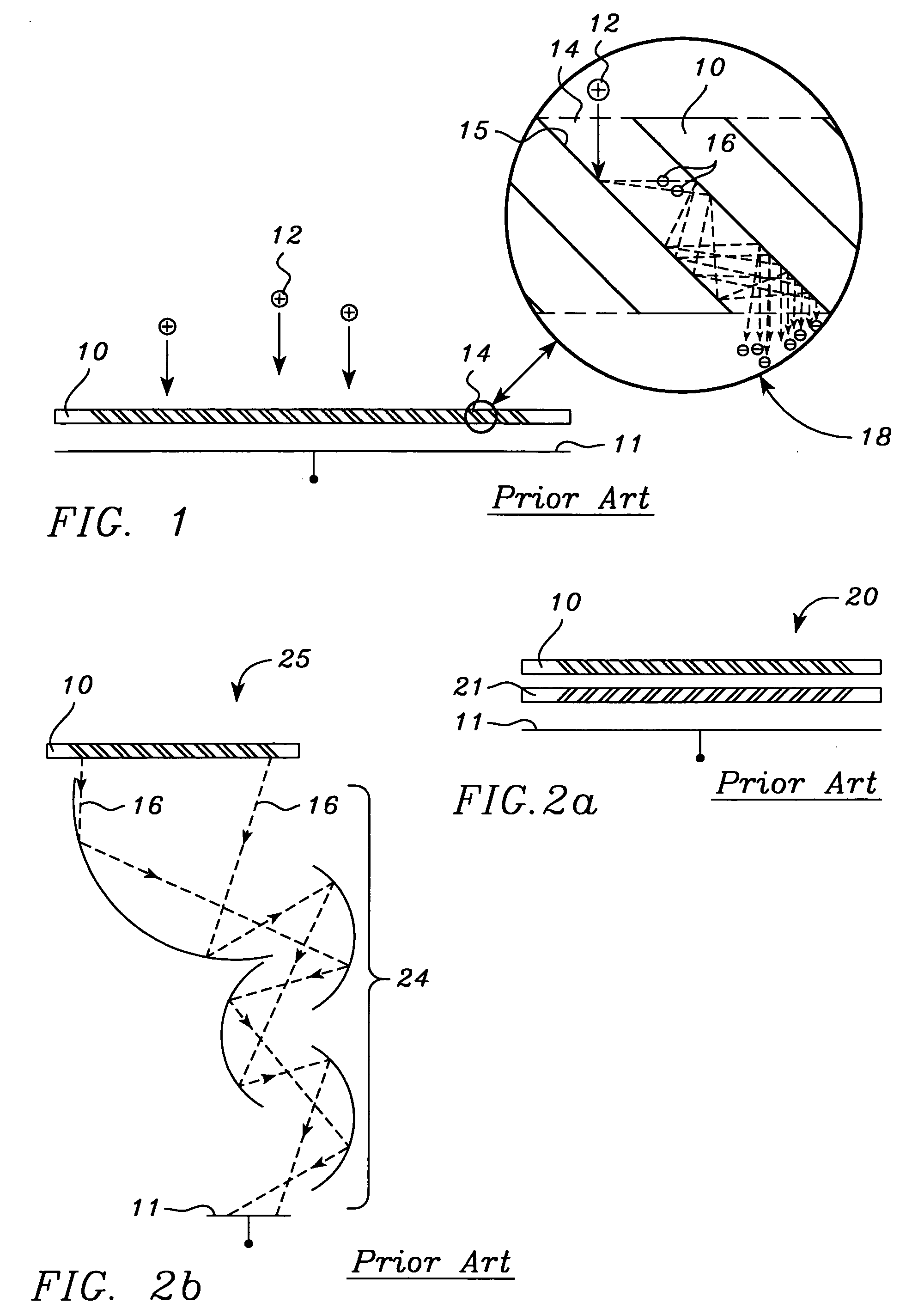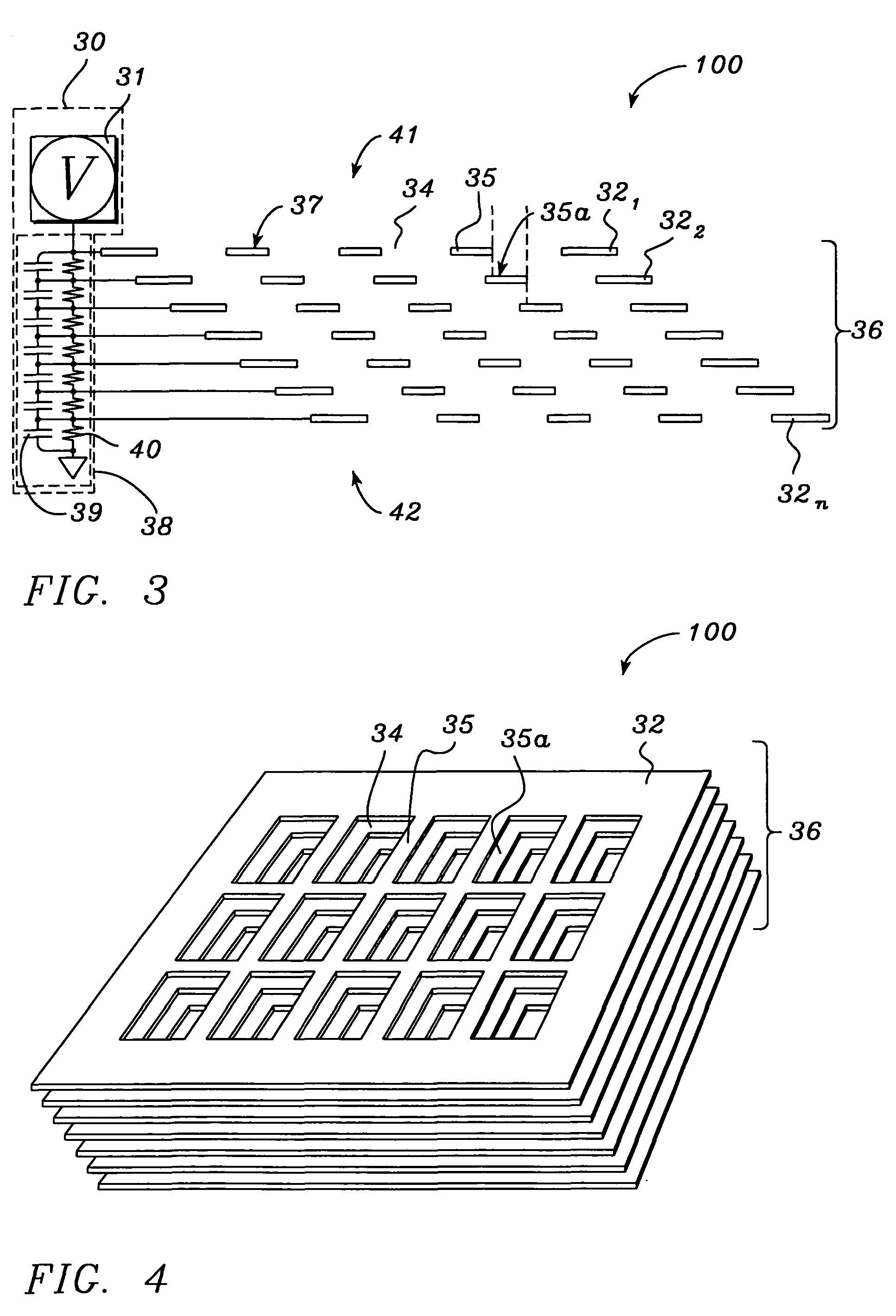Multi dynode device and hybrid detector apparatus for mass spectrometry
a detector and hybrid technology, applied in the field of hybrid detectors for mass spectrometry, can solve the problems of saturation of detectors, affecting the detection efficiency of ion detectors, and generating ghost peaks or artifacts in detected output, so as to avoid significant distortion or artifact generation of output signals, high peak signal output currents, and large dynamic range
- Summary
- Abstract
- Description
- Claims
- Application Information
AI Technical Summary
Benefits of technology
Problems solved by technology
Method used
Image
Examples
Embodiment Construction
[0036]The multi dynode device (MDD) 100 of the present invention is illustrated in FIG. 3 in schematic form and in a perspective view in FIG. 4. The MDD 100 comprises a plurality of n conductive plates called dynode plates 32 arranged in a stack 36. Each dynode plate 32i, where i=1→n, has a plurality of apertures 34 formed therein. The dynode plates 32 in the stack 36 are spaced apart and laterally offset from one another. The MDD 100 further comprises a power source 30 comprising a bias network 38 and a bias voltage source 31. Bias voltages produced and supplied by the power source 30 are applied to each of the dynode plates 32i. The MDD 100 has an input end 41 for receiving ions or electrons and an output end 42 from which electrons exit the MDD 100. The input end 41 is sometimes referred to herein as the top 41 of the stack 36 of dynode plates 32 of the MDD 100 and the output end 42 is sometimes referred to herein as the bottom 42 of the stack 36 of dynode plates 32 of the MDD 10...
PUM
 Login to View More
Login to View More Abstract
Description
Claims
Application Information
 Login to View More
Login to View More - R&D
- Intellectual Property
- Life Sciences
- Materials
- Tech Scout
- Unparalleled Data Quality
- Higher Quality Content
- 60% Fewer Hallucinations
Browse by: Latest US Patents, China's latest patents, Technical Efficacy Thesaurus, Application Domain, Technology Topic, Popular Technical Reports.
© 2025 PatSnap. All rights reserved.Legal|Privacy policy|Modern Slavery Act Transparency Statement|Sitemap|About US| Contact US: help@patsnap.com



